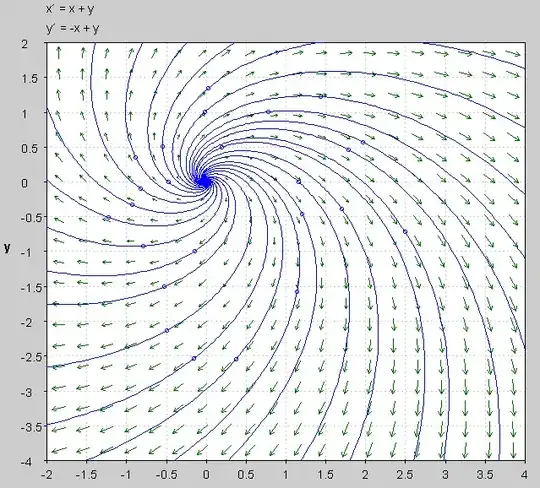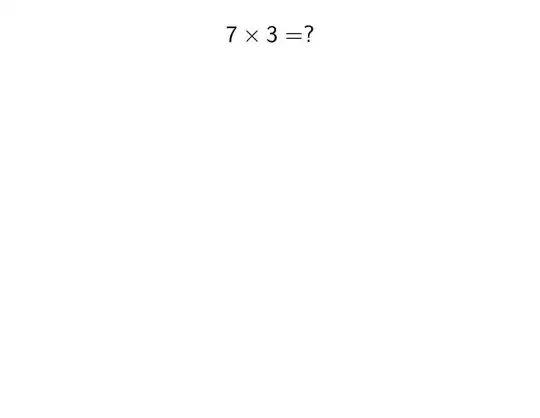Division does not have a remainder. The remainder is an artifact (do not use this word on a six year old) of an incomplete division.
When we do long division, a remainder can take place at any stage of the division process. In fact, a remainder keeps it going from one step to the next.
When we divide 529 by 3, what do we do first? We note that 3 "goes into" 5 one time, and from this, there is a remainder of 2. If we didn't care about accuracy down to the unit, we could just stop right there. We could pad our partial quotient with enough zeros to make $100$, and then append the remaining digits $29$ to the remainder. And thus $529\div 3 = 100, R\ 229$. Surely enough, checking our result, if we multiply $3\times 100$ we get $300$, and if we add $229$ to it, we get $529$.
Of course we know that $529\div 3$ isn't $100$. This is just an approximation which is good to within $100$. The actual number is in fact $100$-something. It's not less than $100$, and it's not $200$ or more.
Now usually we do not do this. We don't stop division at the hundreds or tens to take a funny remainder. We usually stop division at the units, and take the remainder there.
This is because many objects that we work with in the real world cannot be divided beyond the unit. If we want to distribute 13 toys among 4 children, everyone gets three toys, and there is a toy left over. We don't want to divide that toy into four, because it will be destroyed. Thus, we use a form of inexact mathematical division which gives us a model for this real-world constraint: integer division with a remainder.
But non-unit remainders can be useful too. Suppose we are distributing a large number of toys at the wholesale level, and there are 24 toys in a box. Customers must get a whole box; we do not divide boxes. Boxes are only opened in the retail store to sell individual toys.
Now suppose I have $1272$ toys in my warehouse and $5$ stores approach me, all wanting to buy $300$ toys. I don't have $1500$ toys, so I decide to give the customers an equal number of toys based on what I have. Now $1272 \div 5$ gives us $254.4$, or $254\ R\ 2$. Great, each customer can have $254$ toys, with two toys left over I can keep. But wait, the toys are in boxes of $24$, so that can't work! I cannot ship $254$ toys, because that is 10 whole boxes, plus 14 toys from an open box. The calculation has to be done with boxes, not with toys. In fact I have 53 boxes of toys, and I can give the customers 10 boxes each, and have 3 boxes left over. So the remainder is $3\times 24 = 72$ toys. In other words, in a real and useful sense, the remainder of dividing $1272 \div 5$ can be $240$ with remainder of $72$, when we require the result to be a multiple of 24.
So, on to the question: could there be a remainder in multiplication? The answer is no. A remainder is a special way of expressing the error in a calculation, peculiar to inexact division. We do not have to use a remainder to express the error in an inexact division: we can simply express division error as the difference between the approximate quotient and the exact one. For instance $17\div 8$ doesn't have to be $2\ R\ 1$; it could just be $2$ with an error of $-1/8$, since the exact quotient is $2\frac{1}{8}$ and $2 - 2\frac{1}{8} = -\frac{1}{8}$. The result is $\frac{1}{8}$ less than the exact result, and so that is the error.
Multiplications cannot have a remainder for two reasons. Firstly, multiplicationsare usually carried to completion and therefore exact. There is no reason why a multiplication of two integers would be left incomplete, in the same way that we can stop a division short and take stock of what is left. Secondly, multiplications can be inexact, when the inputs are fractions (possibly themselves inexact) and we truncate the result to a given number of significant digits. However, when multiplication is inexact, we do not express the error as a remainder.
The concept of "remaining" is peculiar to division. When we divide a number, and make the result slightly smaller so that the division "works out evenly" we have something "left over". This does not apply in multiplication.
Note also that in (ordinary) multiplication, the two operands are equivalent and it is commutative. In $5\times 4$ both values are products, and it is the same as $4\times 5$. One of the products is called a multiplicand and the other a multiplier, but they can readily switch roles. But in division $5\div 4$ is not $4\div 5$: dividend and divisor cannot switch roles, and the remainder is closely related to the divisor. So right off the bat we have a conceptual problem with a remainder in multiplication: which of the two products should be related to the remainder, like the divisor is in division? If we round off the result of a multiplication to some multiple, and choose to express the error as a remainder related to one of the products, should we choose the multiplicand? or the multiplier? And why?



